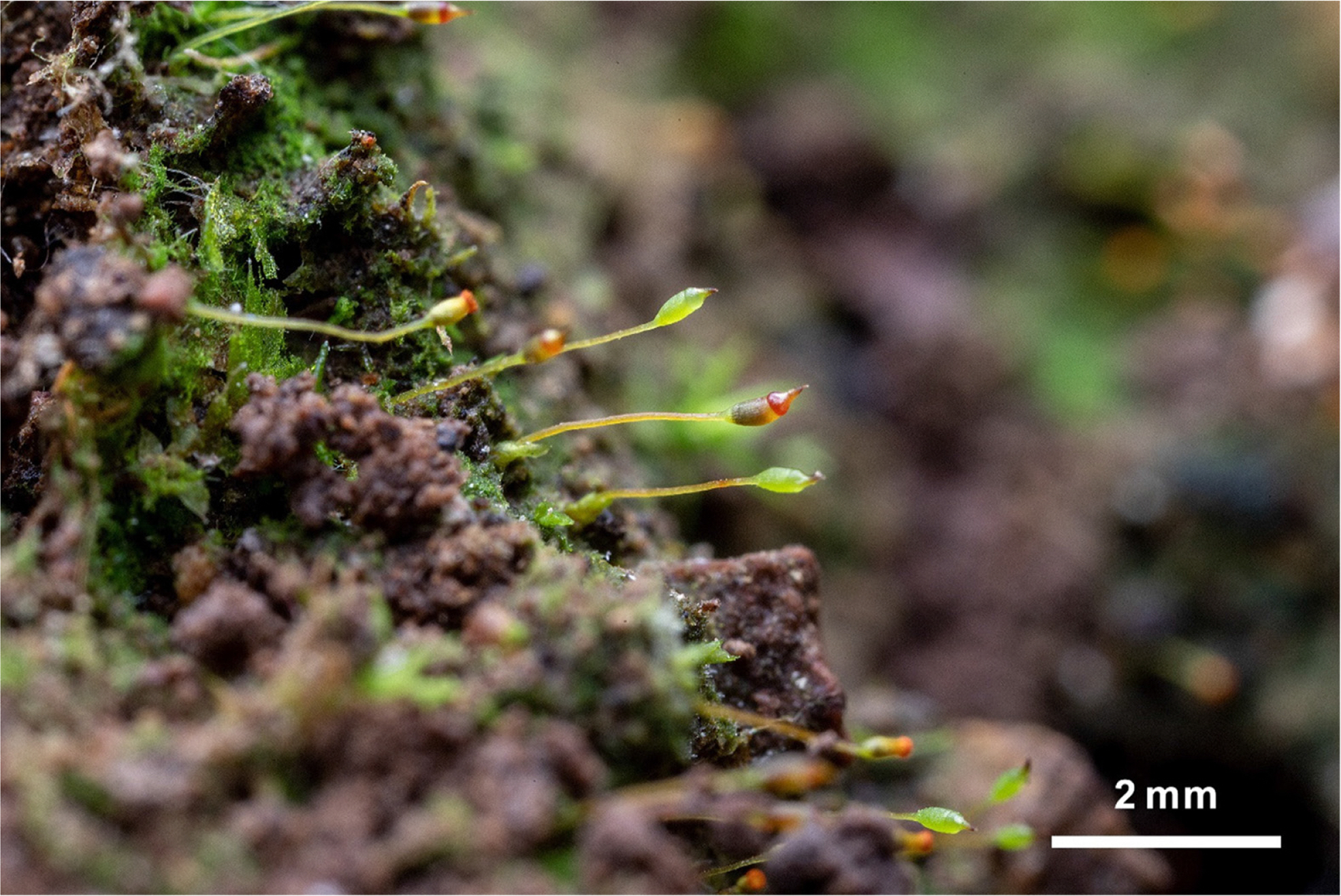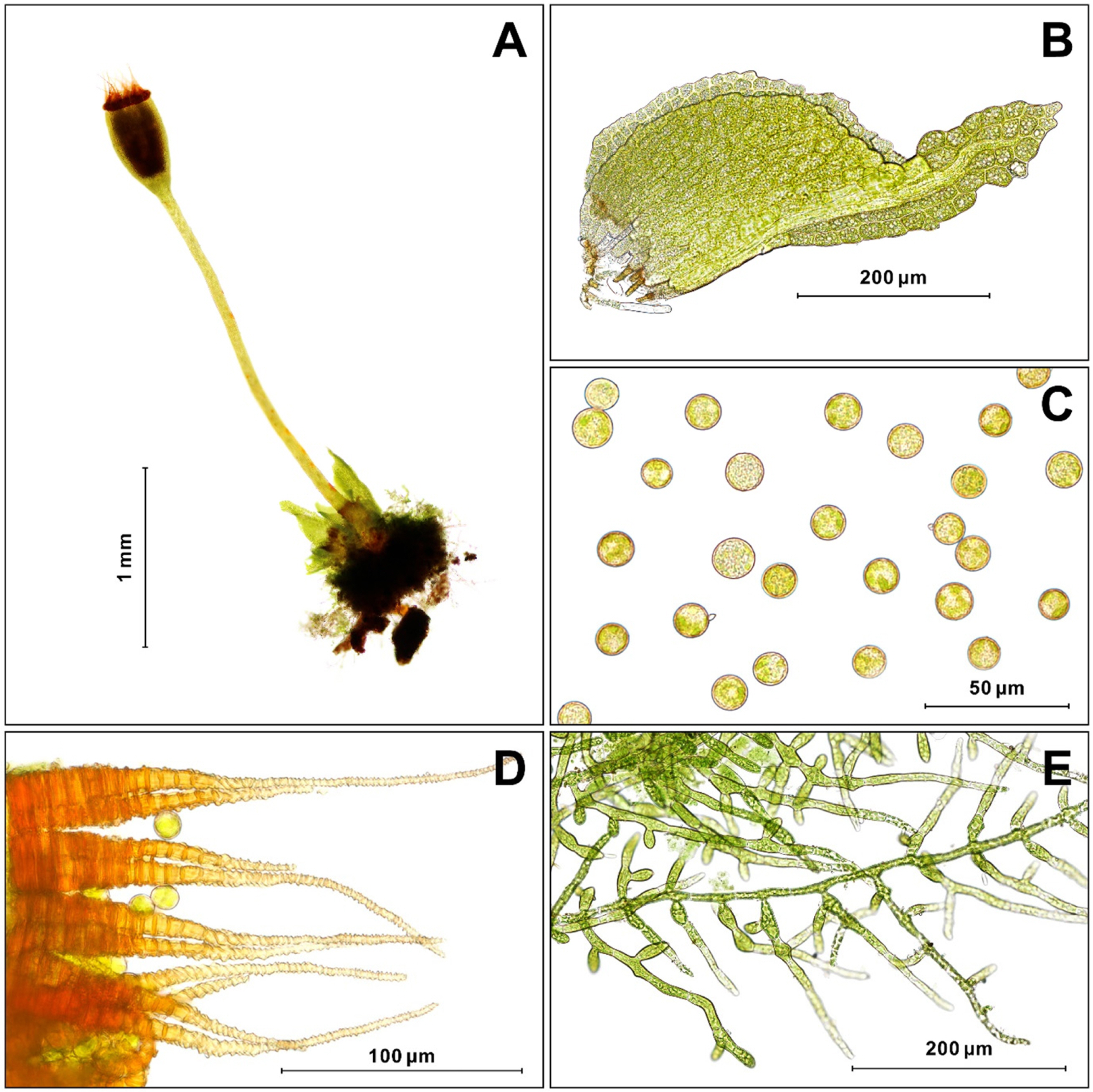Genus Fissidens Hedw. (Fissidentaceae: Bryophyta) is one of highly diversified genera in mosses, consisting of approximately 450 species worldwide (Crosby et al., 2000). Fissidens is the only genus that consists family Fissidentaceae (Pursell and Bruggeman-Nannenga, 2004), characterized by a sheathing part in each leaf called vaginant lamina. Japan and China nearby Korea have well-investigated moss florae including a number of Fissidens species in each country. In China, 49 species and 9 varieties of Fissidens taxa were recorded in 2001 (Li et al., 2001). Japan also recorded similar number of Fissidens taxa, 46 species and 5 varieties in 2002, but the number of taxa increased to 94 species and 5 varieties by 2017 (Suzuki and Iwatsuki, 2012; Suzuki, 2015, 2017). In contrast, 16 taxa in genus Fissidens were described in Korea until 2007 (Park and Choi, 2007) and consequence researches presented newly discovered Fissidens species (Yoon and Sun, 2010; Yoon et al., 2015a, 2015b), resulting 23 taxa (19 species and 4 varieties) in Korea. Most of these Fissidens are also identified in Japan but three out of 23 taxa are not in Japan: (1) Fissidens involutus var. jejuensis Y. J. Yoon, B. C. Tan & B. Y. Sun which is a new variety reported from Jejudo Island (Yoon et al., 2015a), (2) Fissidens borealis C. Gao which is distributed in North Korea and China, and (3) an unresolved species, Fissidens pseudolateralis Cardot, which was firstly reported at Hallasan Mountain in Jejudo Island in 1908 and lastly recorded in the 1960s (Hong and Ando, 1962; Kim, 1968). Because the two taxa, F. involutus var. jejuensis and F. pseudolateralis, have the same Korean name, “Tam-ra-bong-hwang-i-kki,” more investigations of these taxa should be conducted. With active researches of Fissidens in Japan and a relatively small number of taxa in Korea, it is suspected that there may be more unrecorded Fissidens species in Korea. Here, we discovered an unrecorded species: Fissidens protonemaecola Sakurai from two islands, Geojedo Island and Jejudo Island in Korea (Fig. 1), during investigation of bryophyte flora of Korea. In addition, we examined morphological characteristics of F. protonemaecola to identify this species.
Taxonomic Treatment
Fissidens protonemaecola Sakurai, Bot. Mag. (Tokyo) 47: 741, 1933. Fig. 2
Fissidens gemmaceus G. Herzog & P. de la Varde, J. Hattori Bot. Lab. 14: 55, 1955.
Korean name: Cho-rok-sil-bong-hwang-i-kki (초록실봉황이끼).
Plants minute, protonemata persistent. Shoots 0.55–0.80 × 0.20–0.35 mm; stem very short; without central strand. Leaves in 1–3 pairs, 0.20–0.65 mm × 0.10–0.20 mm; lower leaves reduced, scale-like; upper leaves much larger, ovate-lanceolate, acute at apex; costa weak, ending a few cells below leaf apex; vaginant laminae large, rounded, extending to 2/3 of leaf apex; apical and dorsal laminae small, narrowly oblong; margins crenulate to undulate; cells of vaginant laminae oblong-hexagonal, 25–40 μm, smaller toward the leaf margin, rhomboidal, 12–25 × 12–16 μm, somewhat elongate near costa, to 70 μm long; cells of dorsal and apical laminae obscure, rhomboid-hexagonal, 20–30 × 14–20 μm. Rhizautoicous. Seta terminal, 1.5–2.0 mm long, 0.55–0.65 mm thick. Capsule erect, oblong, ovoid when dry, 0.30–0.45 × 0.15–0.20 mm. Operculum rostrate, 0.28–0.35 mm long. Peristome teeth 16, divided to half their length, 0.16–0.24 mm long, ca. 35 μm wide at base. Spores 10–13 μm, spherical, smooth. Calyptra mitrate, to 0.35 mm long. Perigonium 0.30–0.35 mm long.
Habitats: the plants were found on the soil in shaded backslope of the trails of Bukbyeongsan Mountain (elev. 80 m) in Geojedo Island and Gogeunsan Mountain (Oreum; elev. 280 m) in Jejudo Island, Korea.
Distribution: China, Japan, Taiwan (Noguchi, 1987; Li et al., 2001); new to Korea.
Specimens examined: KOREA. Gyeongsangnam-do: Geoje-si, Dongbu-myeon, Bukbyeongsan Mountain, 8 Feb 2019, W. Kwon KBDS01313 (IN). Jeju-do: Seogwipo-si, Seoho-dong, Gogeunsan Mountain (Oreum), 22 Feb 2019, W. Kwon KBDS01488 (IN).
This species has dwarfish bud-like shoots scattered on persistent protonemata. The feature of protonemata is a diagnostic character of F. protonemaecola that clearly distinguishes from other Fissidens species. Two morphologically most related species, Fissidens closteri ssp. kiusiuensis (Sakurai) Z. Iwats., and Fissidens macaoensis L. Zhang, also have extremely small size, but their protonemata are not persistent (Zhang and Hong, 2011). Among the Korean species of Fissidens, Fissidens hyalinus Wilson & Hook. is the closest allied species to F. protonemaecola in phylogenetic tree and these two species belong to subgen. Fissidens sect. Polypodiopsis (Suzuki et al., 2018). The genus Fissidens is classified into three subgenera, Fissidens, Neoamblyothallia, and Pachyfissidens (Suzuki et al., 2018). They are characterized by unique morphology of peristome teeth (Suzuki et al., 2018). Members of sect. Polypodiopsis, belonging to subgen. Fissidens, share Thorsbornei-type costae in cross sections and large parenchymatous cells of laminae (Suzuki et al., 2018); however, the two species of sect. Polypodiopsis, F. protonemaecola, and F. hyalinus are easily distinguishable by plants size and existence of costa.
New Korean name is given as “Cho-rok-sil-bong-hwang-i-kki,” is named for the characteristic protonema, which is a diagnostic character of the species.













